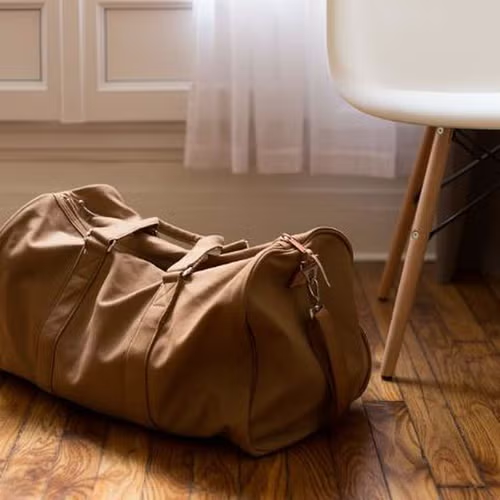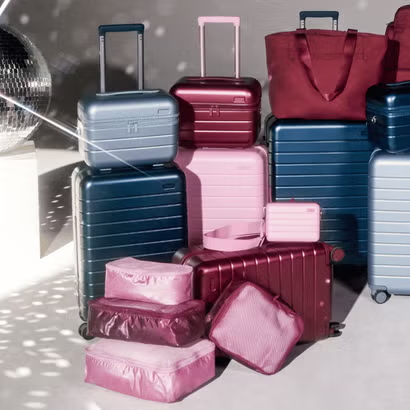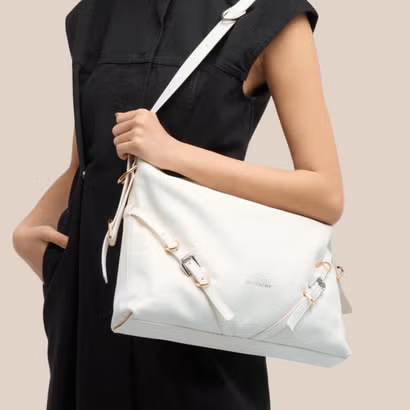Packing Light
Here's how to pack for a 7-day trip in a carry-on bag

Packing light has several advantages, especially since more and more airlines are adopting a la carte pricing policies. These new fees often include charges for checked baggage. Baggage fees are the norm for low-cost carriers, and major airlines charge passengers for checked luggage on domestic and regional routes. The cost can range from $25-$100 for one checked bag each way, depending on the route and the airline. That means that unless you travel with carry-on-only, you may add $50-$200 more to the cost of a round trip flight.
Cost isn’t the only advantage of packing light. Have you ever had to wait for your suitcase at baggage claim? Most baggage claim areas are beyond security, so crowds can be even worse there than at check-in. If you master the art of packing a carry-on, you can breeze past this congested part of the terminal and leave the airport quickly.
You will also avoid the chance of having the airline lose your bag. Airlines have been getting better at handling baggage, but they still lose about five bags per 1,000. If you travel enough, it’s likely you will eventually lose a bag. With carry-on luggage, you can avoid this possibility.
Why Master the Art of Packing Light?
Carry-on-only travel has advantages, but it also has drawbacks. If you are not used to it, it can seem almost impossible to pack everything that you need while accounting for variables such as TSA restrictions.
However, once you master the different aspects of packing light, you will see that traveling with a carry-on is possible, and it will save you time and money. Here is what you need to know about traveling light.
Get The Right Bag
Airlines have very specific rules for carry-on luggage. Enforcement of these rules can vary, but it is best to be on the safe side and get a bag that meets the published size requirements. Legacy carriers, such as Delta and American Airlines, say that a suitcase needs to be 22" x 14" x 9". It pays to research luggage size requirements before you fly. Some airlines allow slightly larger sizes, and others require smaller cases.
Luggage manufacturers are aware of these rules, and they make stylish and functional carry-on suitcases that meet most airlines’ requirements. Some of these bags are adjustable. Usually, this means they have a zipper that, when open, allows the suitcase to expand by an inch or so.
In addition to the right bag or luggage, getting the right travel accessories for your personal needs and your destination can help make packing light even easier. From compact tools to luggage organizers and compressors, there are a lot of useful items that can empower you to bring the necessities and keep your luggage manageable.
Bring Versatile Clothing
One of the most challenging aspects of packing light is choosing what to bring and what to leave. One way to deal with the “should I pack it” question is to only bring clothing items that you can mix and match. For example, each top that you pack should be able to fit with two or three different bottoms. To accomplish this, you can work within a specific color scheme or opt for clothes with neutral colors. Be sure to pack for the weather in your destination. If you are not 100% certain about the forecast, bring clothing that you can easily layer.
If you are taking a longer trip, rather than packing more, you can plan to do a load of laundry mid-trip.
Use Packing Organizers
Packing organizers, such as compression bags or packing cubes, give packers two vital advantages. First, they allow you to organize your suitcase. Even though you only have a 22” x 14” of space, cubes can help keep your items organized.
Secondly, cubes or bags allow you to maximize the number of items that you can fit into your suitcase by compressing everything as much as possible. Manufacturers make cube sets that are specifically for standard-size carry-on cases.
Be Strategic With Liquids
Choosing clothing items might be the biggest challenge for some carry-on users, but for many, the most significant packing problem comes from TSA liquid restrictions. Currently, the TSA allows three containers that have 3.4 ounces of liquids or less. These rules include aerosols, gels, and pastes. You need to carry liquid items in a separate, clear bag that you can take out during the security screening. Some companies manufacture convenient, TSA-approved toiletry bags to make the security checkpoint process easier.
The liquid rules sometimes change, so you need to check with the TSA before traveling. You can limit the impact of these restrictions by opting for solid soaps, deodorants, and cosmetics, and deciding which items you can purchase at your destination.
Forget “Just In Case” and “What If” Items
For the average traveler, a lot of suitcase space gets taken up with “just in case” items. Hopefully, you have already packed all your necessities, and your strategic and versatile clothing choices can help you deal with the weather. At this point in your packing process, you should ask if you really need to bring any additional items.
If you think that you “might” need an item, the odds are probably against you having to use it. If you do need something that you didn’t pack, you can always purchase it at your destination.
Ask About Amenities
If you are staying in a hotel or Airbnb, you should research the available amenities before you leave. In some cases, you can even call and ask for something that the hotel does not mention on their website. They may provide you with something extra if you request it beforehand.
“Amenities” may not just cover things such as toothpaste and shampoo, but also hairdryers and larger items. If you do not have to bring a hairdryer, you will have that much more space in your suitcase.
Double-Check What You Can Bring
TSA liquid restrictions affect what you can bring, but other regulations can cause problems at security checkpoints. Some of these rules, such as bans on lighters, knives, and hazardous chemicals, are obvious. Others, such as restrictions on the size of scissors and clippers that you can have, are less obvious. You can find lists of accepted and prohibited items on the TSA website.
Continually Re-evaluate and Reduce
Review your strategies during and after each trip. What items did you need that you didn’t bring? What things stayed in your suitcase the whole trip? What items were easy to purchase at your destination? While you can follow specific strategies for carry-on-only travel, your personal travel needs are different from the needs of others. Because of this personal dynamic, there is always going to be an element of trial and error while you learn to pack carry-on luggage.
If you see the size of your suitcase and TSA regulations as guidelines for your packing, rather than limitations, you can succeed in your efforts to learn the art and science of carry-on-only travel.
Opening image: pixabay.com
All products and deals are sourced by the Rank & Style team using data and expert insights. If you shop through our links, we may earn a commission—at no extra cost to you.
November 19, 2019







